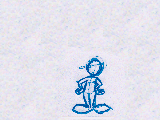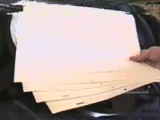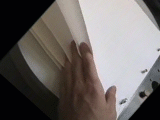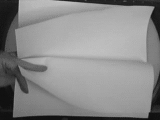 |  |  |
 |  |  |
 |  |  |

 |  |  |
 |  |  |
 |  |  |
|
 |
|
step two ---->> <<---- step two
<<---- step two
Step two: Sit down with a stack of five papers. If you�ve got a peg bar and animation paper that�s great. Just remember to have the peg bar at the bottom of the paper.
step three --->> <<---- step three
<<---- step three
Step three: Stick your fingers into the stack of five papers about halfway down the edge.
You do this by leaving the bottom page flat and putting you pinky on top of it, then a page goes on top of your pinky, then your ring finger goes on top of that page and so on ... if correctly done your thumb should be on top of the upper most paper.
step four ---->> <<---- step four
<<---- step four
Step four: Move your index finger and thumb so that the paper bends back revealing the second page down, then when you can clearly see the second page bend it back over the first page, continue this with all your fingers till you see the page under your pinky.
PRACTICE STEP FOUR!!! Do step four in forwards and reverse, but start out slowly.

That�s it. That�s "rolling the drawings." The most important reason for doing so is to see your drawings move. If something isn�t moving smoothly, find the drawing that isn�t right and pause your rolling for a moment while you make adjustments to that drawing.
You can also use rolling to compare two drawings that aren�t even next to each other. With some experimentation you should be able to master comparing drawings, rolling to see movement, and making adjustments to strengthen your drawings and animation.